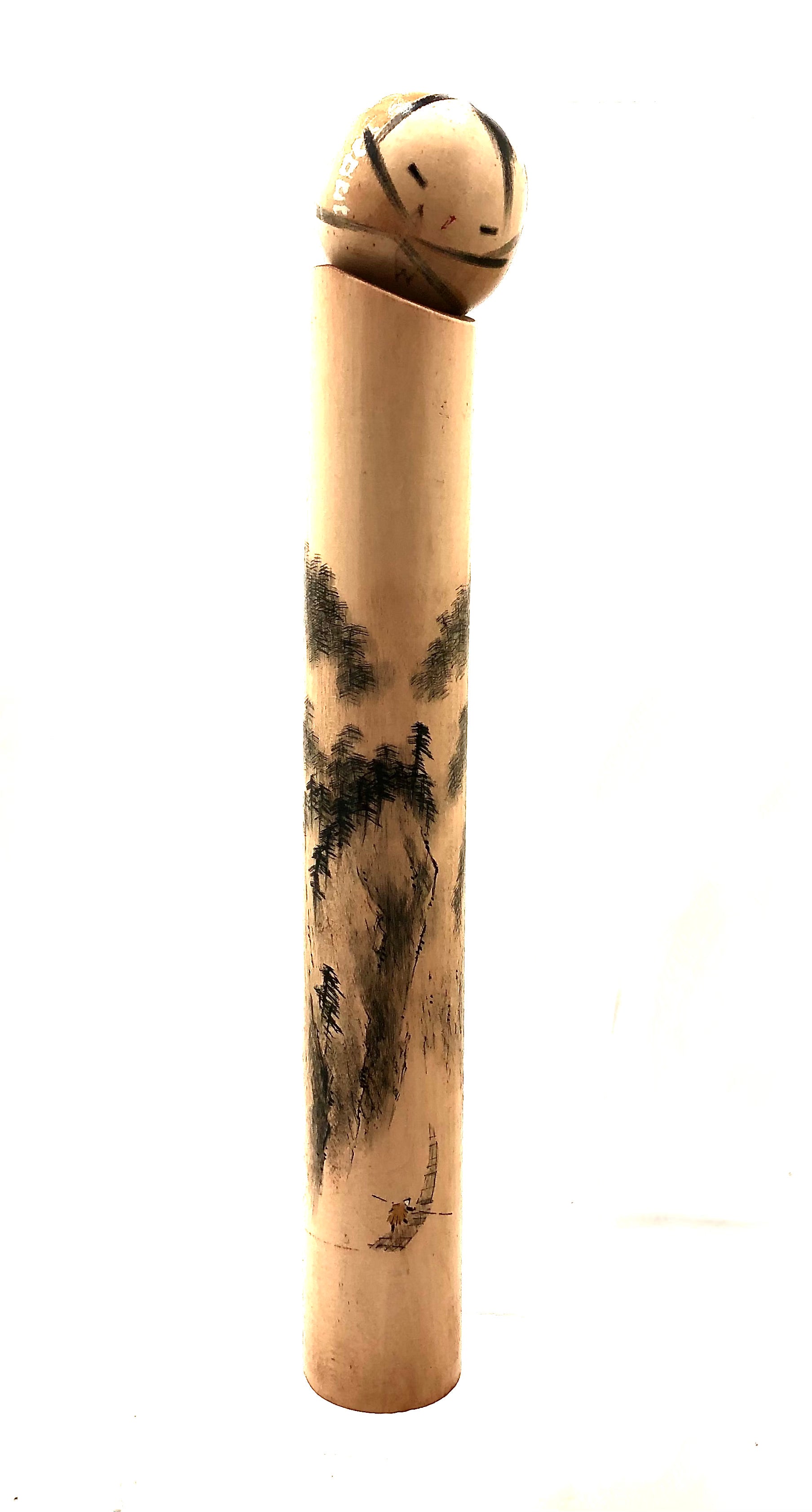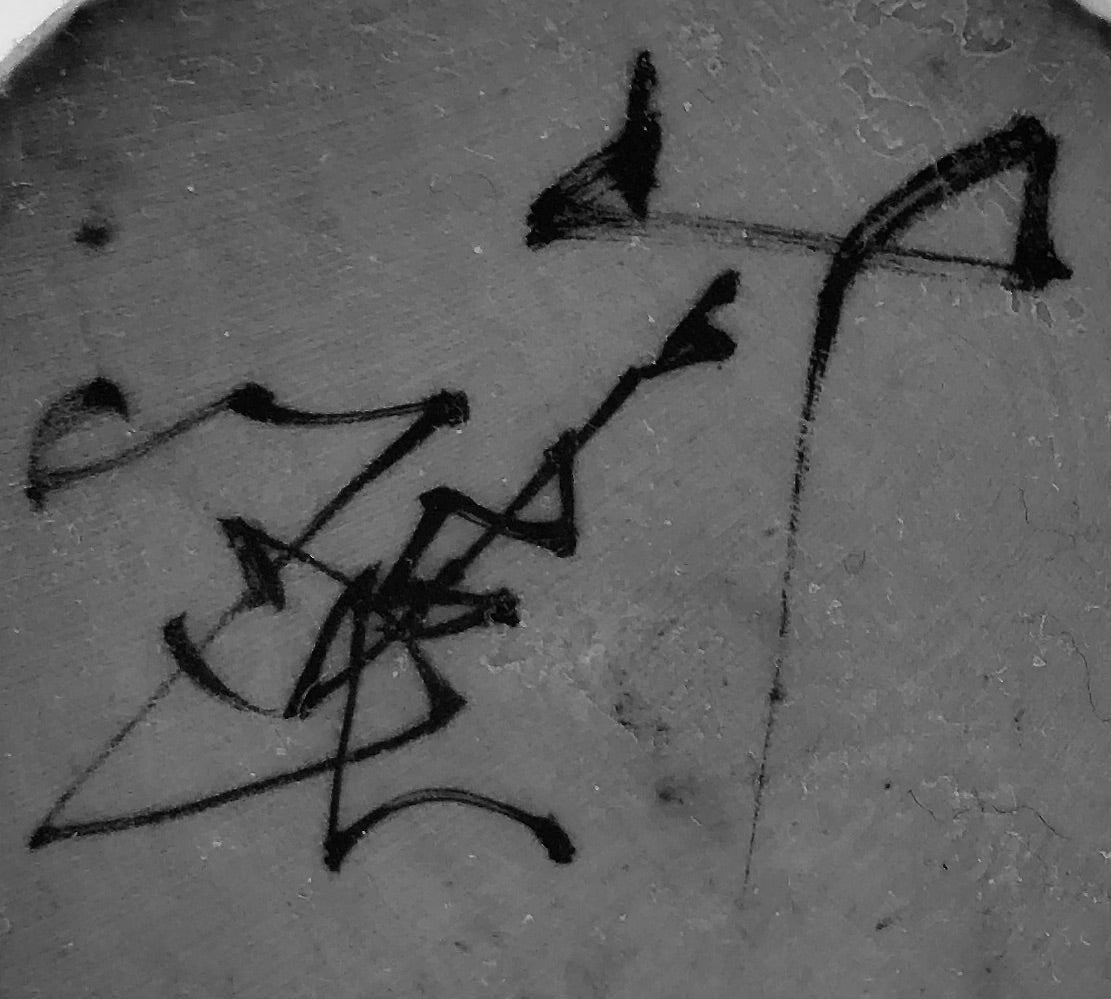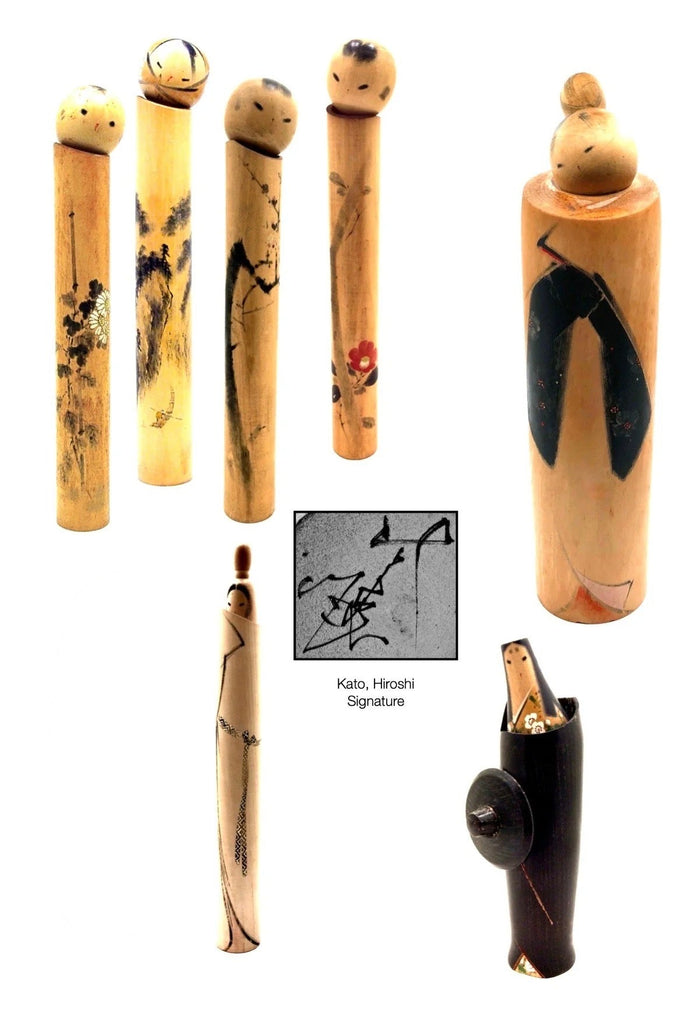


Vintage Sosaku Kokeshi entitled: “Fāsukai | Far Sky” by Kato, Hiroshi
Dimensions: 15-1/2”h
Kato-san’s tall and slender figures bring memories of very traditional women in Japan and were not meant to be sentimental, but to exemplify the relationship between the figure expressing serenity and stability The sumi-e’ brushwork of her decorative Kimono with a traditional forest/mountain motif and a mountain stream with boatman is intricately detailed in this very unique doll. She is wearing a head wrapped called a ‘Hachimaki’ which has a very decorative top element surrounded by black hair. The faces are extremely expressive with slanted head adding an unusual aspect to one of a series of seasonal dolls. Signed by the artist.
Condition: The piece is a very rare stylization of this form and is in perfect condition, as originally created with no fading or loss of color and consistent with age. The piece meets all the standards of collectible Folk Art.
NOTE: A little-known artist who specializes in tall, elegant dolls, Kato-san’s creations rarely come up for auction. His birthplace, dates, and studio are unknown. He was only actively producing Kokeshi in the 1960s.

Artisan
Woodworker: Kato, Hiroshi
Active only in the 1960s
Biographical History:
As collectors, we felt it was most important to represent all Sosaku Kokeshi artists, whether or not each artist has a written account of his/her life. We show the diversity of cultural values and the creative work produced by a multitude of artists. In researching old writings through articles and books that remain, it is evident that the Kokeshi Craftsperson not only created beautiful forms as toys, but also kept alive cultural values, customs, and fashion through the extensive representations of Kokeshi dolls. The beauty is in the doll and not the signatures, for most masters never signed their dolls. Later they named the dolls, but only when Westerners insisted on signatures because they did not know the artists, so the carvers began to sign their works, for the carvers wanted to promote sales to make a living, during the seasons that did not provide an environment to continue their otherwise daily work.
Kato-san’s slender and tall figures bring memories of very traditional women in Japan celebrated wearing a diversity of fashions. Nothing else has been written about this artist. As researchers and collectors, we felt it was most important to represent all Sosaku Kokeshi artists whether or not the artist has a written account of his or her life. Each shows the diversity of this cultural specialization and the creative work produced by this artist.
Collector's note – descriptive qualities, standard characteristics & ornamentation styles:
Kato-san’s slender and tall figures illustrate the changing seasons and unique characteristics of different types of fashion and daily dress, in several instances revealing the layers of the precious undergarment. He takes a rather contemporary approach to the ‘Mage” hair design in both form and sumi-e’ brushwork, suggesting features a stylistic details relating to the general design of the Kimono and the black and gold obi. His face is extremely expressive, with a tilting of the head adding an unusual aspect to one series of dolls. Typical are the scenes from nature, (flowers, mountains). Each doll celebrates the rich natural grain and color of the wood used with sinuous circular forms.
Hiroshi's stylized versions of Heian noblewomen, from families of high rank, were one of his favorite subjects. Women enjoyed a certain aspect of freedom during the period and were well-educated in music, poetry, art, fashion, and calligraphy, all part of a Heian Period woman's education.
Many of these women traveled incognito (Oshinobi Dochi), and Hiroshi's creative dolls of the subject are extremely rare. He beautifully details their elongated faces and long hair which were common for ladies of this period wearing travel attire: oversized hat and a heavy coat to ward off the chill.
Explore & Learn More about Woodworker: Kato, Hiroshi